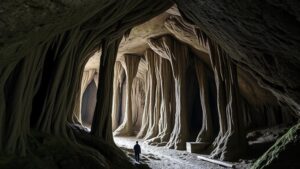Following the golden llamas: tracing the journey of hidden Inca treasures.
Following the Golden Llamas: Tracing the Journey of Hidden Inca Treasures
The Inca Empire, flourishing in the Andean mountain region of South America from the early 15th century until the Spanish conquest in the 16th century, is renowned for its incredible wealth, impressive infrastructure, and rich cultural heritage. Much of this wealth, especially in the form of gold and silver, has been lost to history, leading to countless legends and tales of hidden treasures waiting to be discovered. Among these narratives is the fascinating journey of the golden llamas–an allegorical representation of lost Incan treasures. This article delves into the lore surrounding these treasures, tracing their fictional and historical paths, while highlighting the significance of their cultural context.
The Historical Context of Inca Treasures
When the Spanish arrived in South America in the 1530s, they encountered a civilization rich in resources but tragically vulnerable to external conquest. The Incas, with their formidable engineering skills and intricate societal structures, amassed vast quantities of gold and silver, primarily sourced from mines such as those in present-day Peru. It is estimated that the Spanish plundered nearly 200,000 tons of gold and silver from the Incas during their conquest, equivalent to billions in todays currency.
The Legend of the Golden Llamas
Legend has it that before the Spanish arrived, the Incas hidden their treasures in various locations, often guarded by symbolic representations such as llamas, which were sacred to the Incas. According to folklore, these golden llamas would point the way to caches of buried treasures, guiding both the faithful and the fortune seekers alike through rugged Andean pathways.
Key Locations and Treasures
Mysterious sites associated with hidden Inca treasures abound in Peru. Some noteworthy locations include:
- Qorikancha (Temple of the Sun): Located in Cusco, this temple once contained an extraordinary amount of gold, adorned with sheets of gold and offerings. After the Spanish conquest, much of the gold was looted and taken to Spain.
- Sacsayhuamán: A stunning archaeological site overlooking Cusco, it is believed to have served as a fortress and possibly held hidden treasures behind its massive stone walls.
- Lake Titicaca: This sacred body of water is said to be the resting place of lost Inca treasures, believed to have been submerged to protect them from invaders.
Treasure Hunting and Modern Explorations
The allure of Incan treasures has attracted treasure hunters and archaeologists for centuries. Some notable efforts include:
- Hiram Binghams Discoveries: In 1911, American explorer Hiram Bingham discovered Machu Picchu, which revealed significant insights into Inca civilization. While he did not uncover golden llamas, his findings sparked global interest in Inca treasures.
- Modern Archaeological Efforts: Today, archaeologists employ advanced technologies such as LiDAR and ground-penetrating radar to discover hidden structures and artifacts. Notable explorations have occurred around Cusco and the Sacred Valley.
Conclusion and Cultural Significance
The journey of hidden Inca treasures, embodied by the mythical golden llamas, serves not only as a tale of adventure but also highlights the cultural significance of the Inca civilization. Each treasure, whether recovered or lost, is a testament to the ingenuity and resilience of the Inca people.
As treasure hunters and scholars continue to pursue the remnants of this storied past, it becomes essential to recognize that the true value of Inca treasures lies not only in their material wealth but in their capacity to educate us about a rich tapestry of history, innovation, and indigenous culture. The quest for the golden llamas thus remains a shared effort to preserve heritage and understand the Inca Empire’s profound legacy.
Actionable Takeaways
- Explore archaeological sites in Peru to deepen your understanding of Inca civilization.
- Engage with local guides to learn about the lore surrounding lost treasures.
- Support ongoing research and excavation efforts aimed at uncovering historical artifacts.



